 |
|
||||
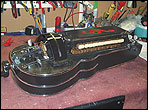 |
Letters to the editor John LeClair built a hurdy-gurdy from GAL Instrument Plan #49, and lived to tell the tale. |
||||
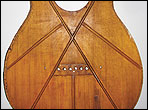 |
The Creation of the American X-Braced Guitar: A British Perspective from his 2014 GAL Convention lecture by James Westbrook The emergence of the X-braced steel string as the quintessential American guitar was the big pop-music story of the 20th century, as well as the cultural foundation for the American Lutherie Boom a few decades later. The Martin company made the first American X-braced guitars in the 1840s, but is that the whole story? Of course not. |
||||
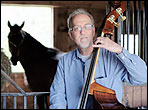 |
Meet the Maker: Arnold Schnitzer by James Condino Arnold Schnitzer was a young and successful working musician in the New York City area. When he found himself with the grown-up responsibilities of a wife and child, he decided to settle down and get a real job. Amusingly, that real job was hand-making string basses. But it has worked out well, so you never know. You'll be glad you met him in this wide-ranging and lavishly illustrated interview. |
||||
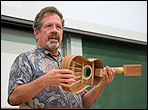 |
Contemporary Ukulele Making: Neck-Joining Methods from his 2014 GAL Convention workshop by Woodley White At the recent GAL Convention, each of the four makers on our ukulele panel took the oportunity to present short workshops in which they brought the attendees up close to some of their workbench techniques. We'll cover all four of them, plus the uke panel discussion, in this and future issues of American Lutherie. We start with Woodley White, who showed six different neck joints for ukes; Spanish, dovetail, spline, domino, barrel-nut, and threaded-insert. He made one of each, and explains the differences. |
||||
 |
Meet the Maker: Manuel Diaz
by Federico Sheppard Manuel Diaz learned lutherie decades ago in a little shop in his hometown. Then he moved across the street and opened his own shop. But what a town, and what a street! This is the Cuesta Gomerez in Granada, Spain. |
||||
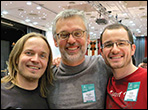 |
Holy Grail Guitar Show, Batman!
by Paul Schmidt Hey all you old hippie guitar makers in the first wave of the American Lutherie Boom: Guess what? Our crazy, beautiful, oh-wow-man dream came true. A generation of young Europeans took a look across the Atlantic and dug our lutherie love-fest. They started an organization to freely share info and encouragement. It only took them four decades, but they finally caught the true religion from us. And they are doing amazing, wild, and wonderful work. I told you this cooperation stuff would work. |
||||
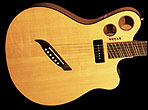 |
Why Build a Multiscale Guitar? by Ralph Novak Ralph has built a lot of multiscale guitars under his “Fanned-Fret” trademark. Here he looks at the advantages and possibilities of the multiscale approach and gives solid technical advice on cutting accurate multiscale fretboards. |
||||
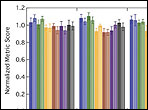 |
Savart Journal: Recent Research by R.M. Mottola RM Mottola works to build bridges between the dusty bustle of the lutherie shop and the bookish clutter of the egghead's cubicle. (If the word "math" does not evoke a shuddering fear based on high-school humiliation, check out the Savart Journal, an online research publication hosted by the GAL.) RM describes, in plain English, the contents of two new articles of original research. |
||||
| Reviews by Gregory Miller, and John Calkin Miller reviews The Qualities of Craftsmanship, a thoughtful little book self-published by GAL stalwart Kent Everett. Calkin looks at several books on ukulele, guitar, and American history, and finds interesting connections. |
|||||
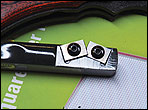 |
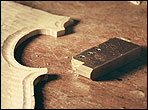 |
Product Reviews by John Calkin, and Greg Nelson Calkin likes the Edgemate Carbide Knife Sharpener. It's intended for pocket knives and the like, but it's also useful for a number of lutherie tools. Nelson gives a positive review to the Channel Scraper, a simple tool for shaping the edge of a violin plate. |
|||
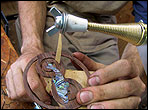 |
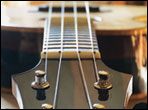 |
It Worked for Me by David Freeman, Clifford Wilkes, Ed Smith, and Jerry Hoffmann Freeman shows how to make a tiny reciprocating sander from a springy doorstop. Wilkes uses a slotted section of PVC pipe to clamp binding to the inside of a round soundhole. Smith pre-shapes herringbone purfling with a laundry iron. Hoffman uses small steel pins instead of slots in a uke nut. |
|||
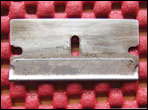 |
Questions edited by R.M. Mottola How do you finish the insides of peghead slots? Can you calculate the clamping pressure of a bolt if you know the torque? How can I build a cheap guitar that will sound really good? Why are guitars so big? What's the deal on uke-family sizes and scales? |
||||
Web Extras |
|||||
